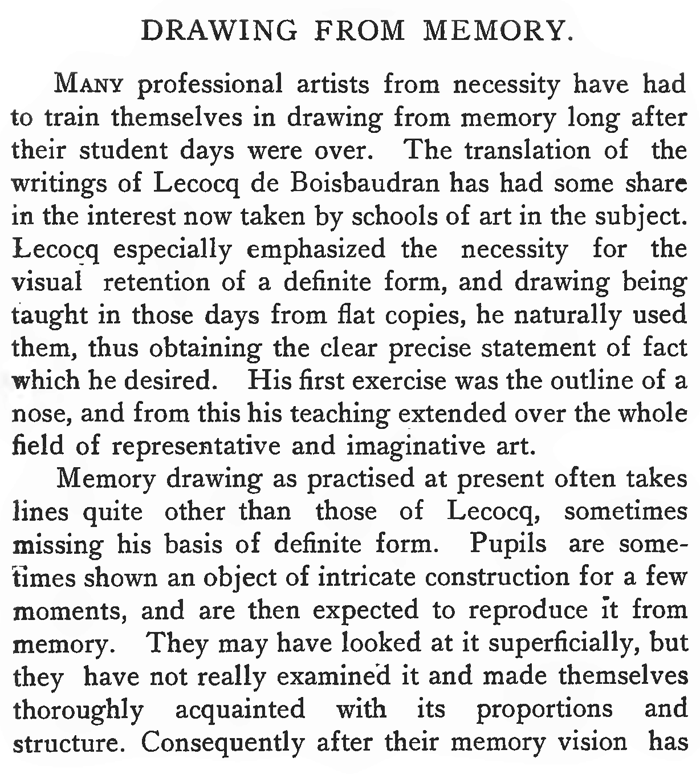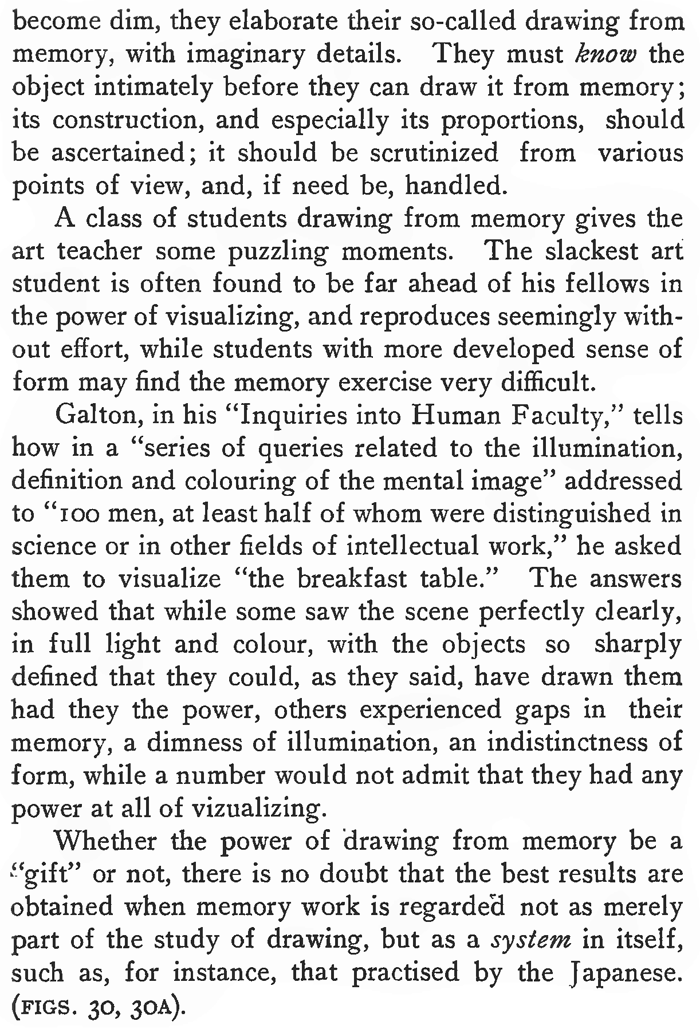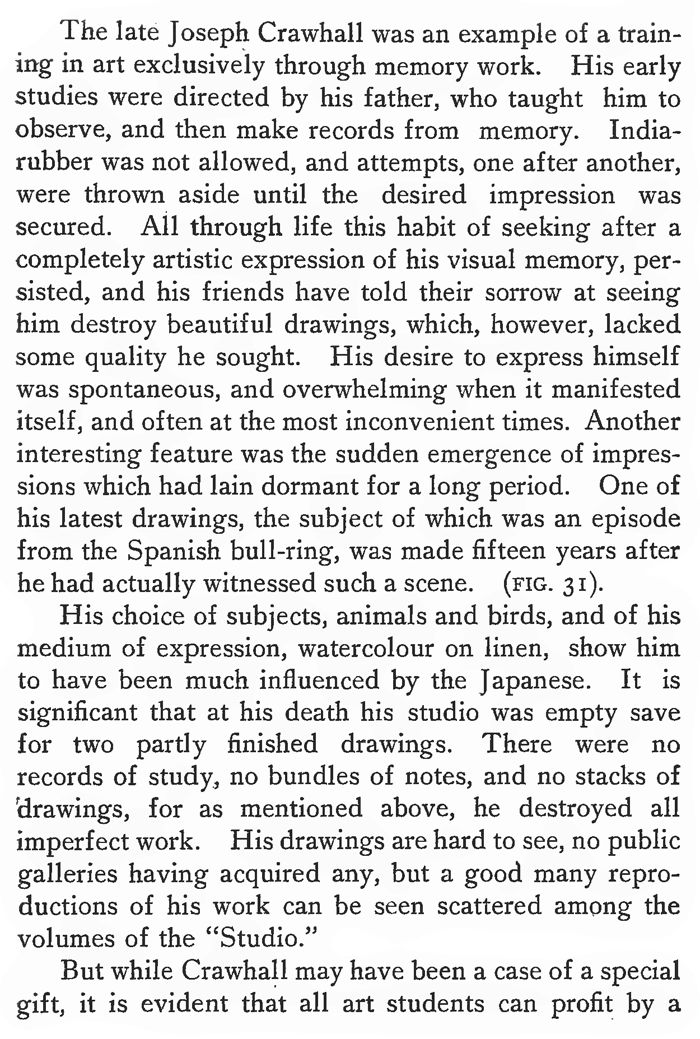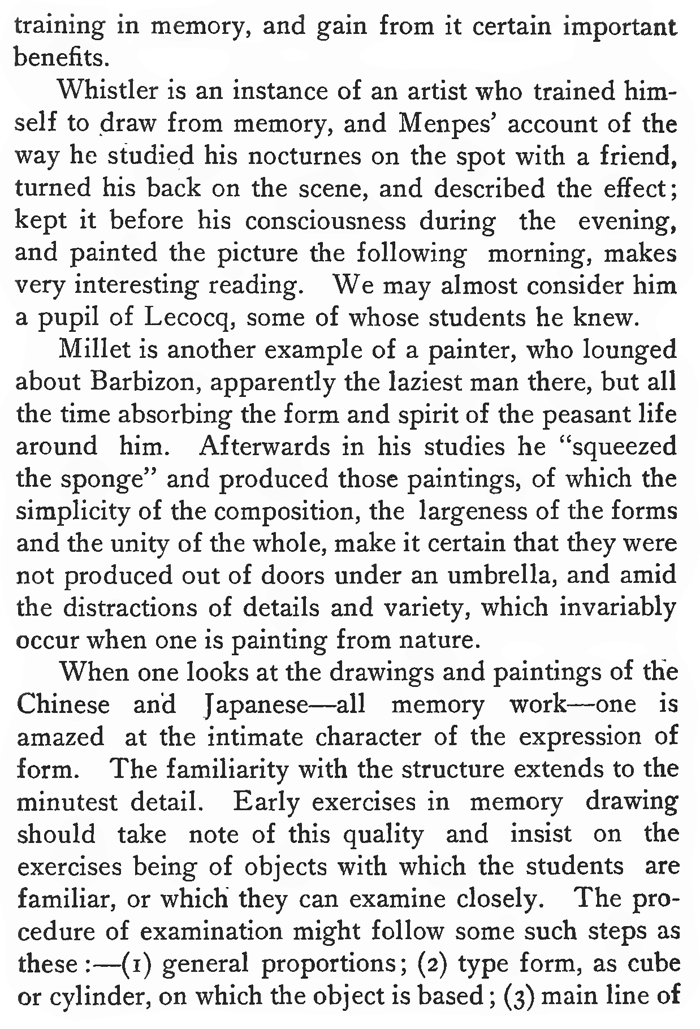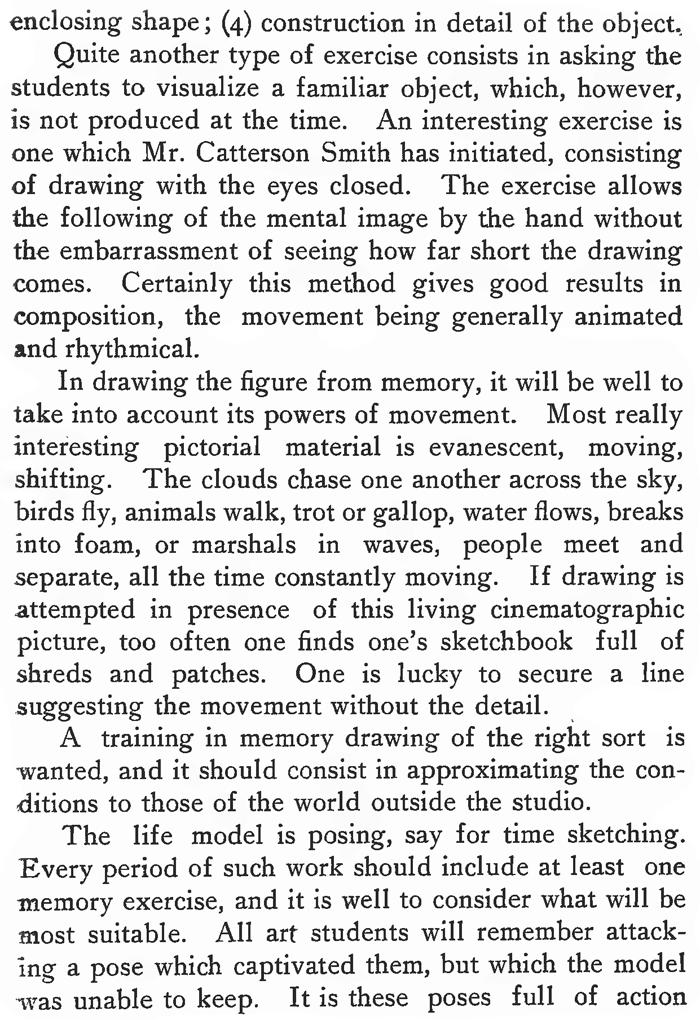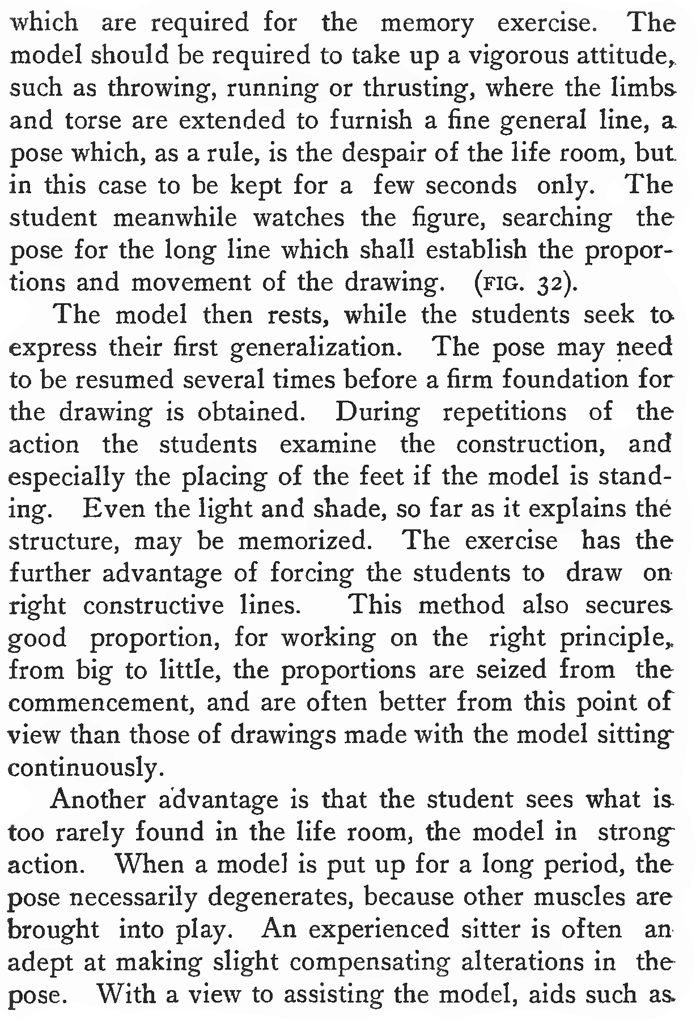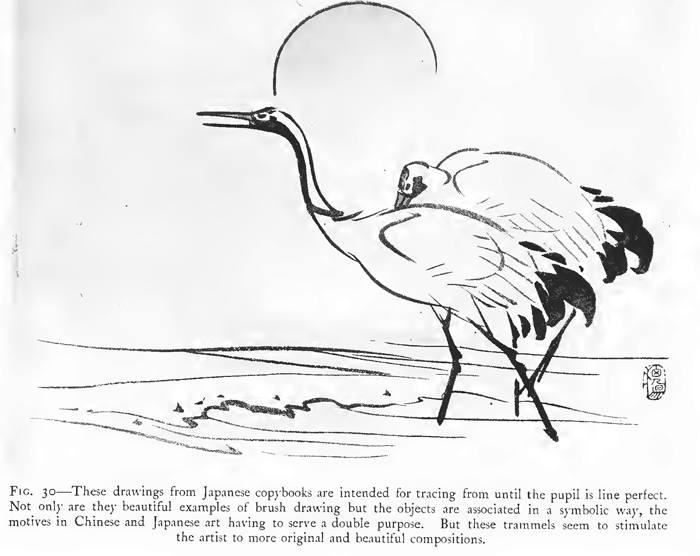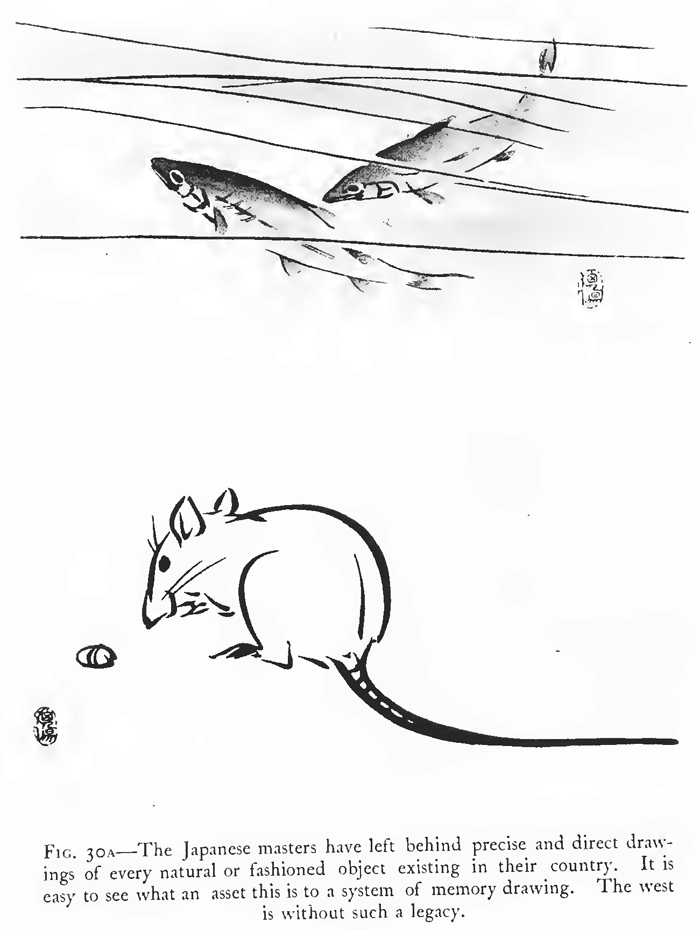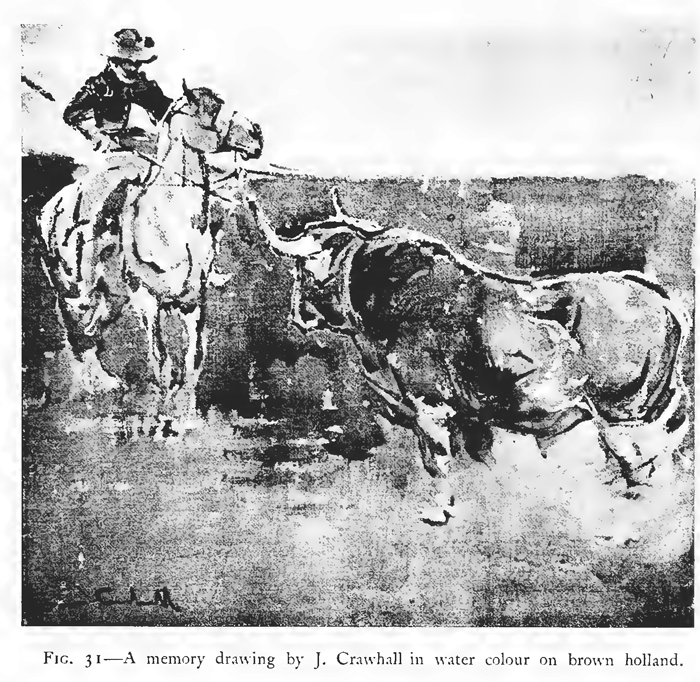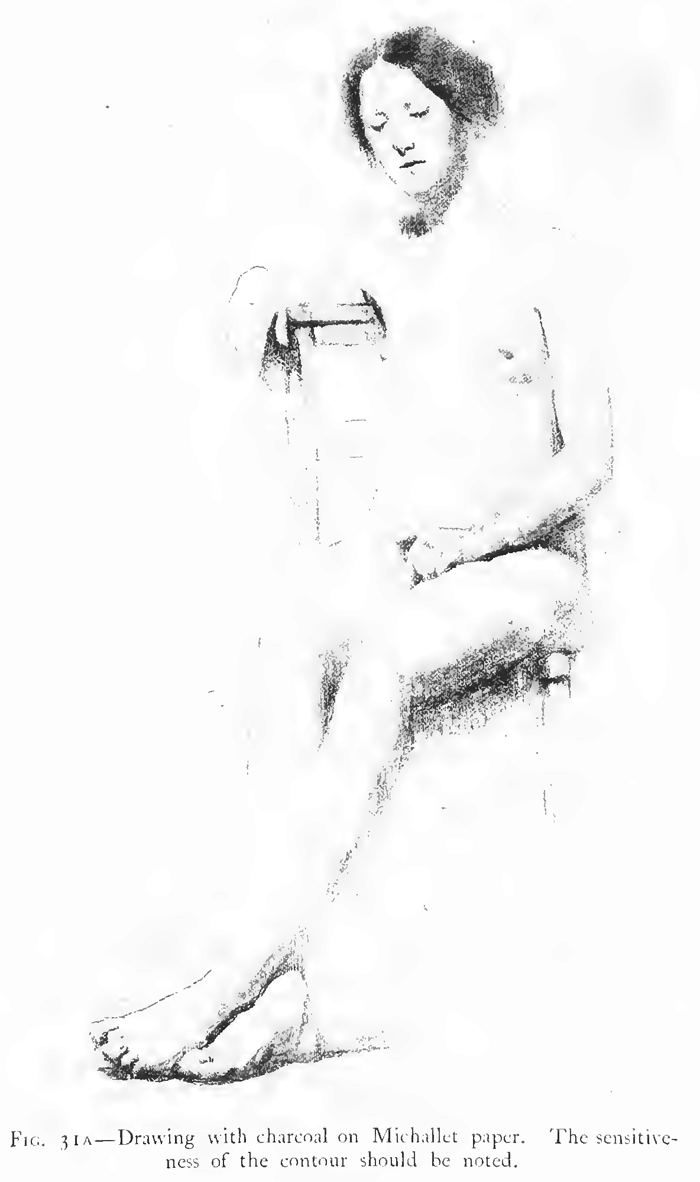Home >Directory of Drawing Lessons > How to Improve Your Drawings > Meemory Drawing > How to Draw From Children
MEMORY DRAWING : How to Draw From Memory and Imagination with the Following Lesson
|
|
DRAWING FROM MEMORY.Many professional artists from necessity have had to train themselves in drawing from memory long after their student days were over. The translation of the writings of Lecocq de Boisbaudran has had some share in the interest now taken by schools of art in the subject. Lecocq especially emphasized the necessity for the visual retention of a definite form, and drawing being taught in those days from flat copies, he naturally used them, thus obtaining the clear precise statement of fact which he desired. His first exercise was the outline of a nose, and from this his teaching extended over the whole field of representative and imaginative art. Memory drawing as practised at present often takes lines quite other than those of Lecocq, sometimes missing his basis of definite form. Pupils are sometimes shown an object of intricate construction for a few moments, and are then expected to reproduce h from memory. They may have looked at it superficially, but they have not really examined it and made themselves thoroughly acquainted with its proportions and structure. Consequently after their memory vision has become dim, they elaborate their so-called drawing from memory, with imaginary details. They must know the object intimately before they can draw it from memory; its construction, and especially its proportions, should be ascertained; it should be scrutinized from various points of view, and, if need be handled. A class of students drawing from memory gives the art teacher some puzzling moments. The slackest art student is often found to be far ahead of his fellows in the power of visualizing, and reproduces seemingly without effort, while students with more developed sense of form may find the memory exercise very difficult. Galton, in his "Inquiries into Human Faculty," tells how in a "series of queries related to the illumination, definition and colouring of the mental image" addressed to "Ioo men, at least half of whom were distinguished in science or in other fields of intellectual work," he asked them to visualize "the breakfast table." The answers showed that while some saw the scene perfectly clearly, in full light and colour, with the objects so sharply defined that they could, as they said, have drawn them had they the power, others experienced gaps in their memory, a dimness of illumination, an indistinctness of form, while a number would not admit that they had any power at all of vizualizing. Whether the power of drawing from memory be a "gift" or not, there is no doubt that the best results are obtained when memory work is regarded not as merely part of the study of drawing, but as a system in itself, such as, for instance, that practised by the Japanese. (FIGS. 30, 30A). The late Joseph Crawhall was an example of a training in art exclusively through memory work. His early studies were directed by his father, who taught him to observe, and then make records from memory. India-rubber was not allowed, and attempts, one after another, were thrown aside until the desired impression was secured. All through life this habit of seeking after a completely artistic expression of his visual memory, persisted, and his friends have told their sorrow at seeing him destroy beautiful drawings, which, however, lacked some quality he sought. His desire to express himself was spontaneous, and overwhelming when it manifested itself, and often at the most inconvenient times. Another interesting feature was the sudden emergence of impressions which had lain dormant for a long period. One of his latest drawings, the subject of which was an episode from the Spanish bull-ring, was made fifteen years after he had actually witnessed such a scene. (FIG. 31). His choice of subjects, animals and birds, and of his medium of expression, watercolour on linen, show him to have been much influenced by the Japanese. It is significant that at his death his studio was empty save for two partly finished drawings. There were no records of study, no bundles of notes, and no stacks of 'drawings, for as mentioned above, he destroyed all imperfect work. His drawings are hard to see, no public galleries having acquired any, but a good many reproductions of his work can be seen scattered among the volumes of the "Studio." But while Crawhall may have been a case of a special gift, it is evident that all art students can profit by a training in memory, and gain from it certain important benefits. Whistler is an instance of an artist who trained himself to draw from memory, and Menpes' account of the way he studied his nocturnes on the spot with a friend, turned his back on the scene, and described the effect; kept it before his consciousness during the evening, and painted the picture the following morning, makes very interesting reading. We may almost consider him a pupil of Lecocq, some of whose students he knew. Millet is another example of a painter, who lounged about Barbizon, apparently the laziest man there, but all the time absorbing the form and spirit of the peasant life around him. Afterwards in his studies he "squeezed the sponge" and produced those paintings, of which the simplicity of the composition, the largeness of the forms and the unity of the whole, make it certain that they were not produced out of doors under an umbrella, and amid the distractions of details and variety, which invariably occur when one is painting from nature. When one looks at the drawings and paintings of the Chinese and Japanese—all memory work—one is amazed at the intimate character of the expression of form. The familiarity with the structure extends to the minutest detail. Early exercises in memory drawing should take note of this quality and insist on the exercises being of objects with which the students are familiar, or which they can examine closely. The procedure of examination might follow some such steps as these :—(1) general proportions ; (2) type form, as cube or cylinder, on which the object is based ; (3) main line of Quite another type of exercise consists in asking the students to visualize a familiar object, which, however, is not produced at the time. An interesting exercise is one which Mr. Catterson Smith has initiated, consisting of drawing with the eyes closed. The exercise allows the following of the mental image by the hand without the embarrassment of seeing how far short the drawing comes. Certainly this method gives good results in composition, the movement being generally animated and rhythmical. I n drawing the figure from memory, it will be well to take into account its powers of movement. Most really interesting pictorial material is evanescent, moving, shifting. The clouds chase one another across the sky, birds fly, animals walk, trot or gallop, water flows, breaks into foam, or marshals in waves, people meet and separate, all the time constantly moving. If drawing is attempted in presence of this living cinematographic picture, too often one finds one's sketchbook full of shreds and patches. One is lucky to secure a line suggesting the movement without the detail. A training in memory drawing of the right sort is wanted, and it should consist in approximating the conditions to those of the world outside the studio. The life model is posing, say for time sketching. Every period of such work should include at least one memory exercise, and it is well to consider what will be most suitable. All art students will remember attacking a pose which captivated them, but which the model was unable to keep. It is these poses full of action which are required for the memory exercise. The model should be required to take up a vigorous attitude, such as throwing, running or thrusting, where the limbs and torse are extended to furnish a fine general line, a pose which, as a rule, is the despair of the life room, but in this case to be kept for a few seconds only. The student meanwhile watches the figure, searching the pose for the long line which shall establish the proportions and movement of the drawing. (FIG. 32). The model then rests, while the students seek to express their first generalization. The pose may need to be resumed several times before a firm foundation for the drawing is obtained. During repetitions of the action the students examine the construction, and especially the placing of the feet if the model is standing. Even the light and shade, so far as it explains the structure, may be memorized. The exercise has the further advantage of forcing the students to draw on right constructive lines. This method also secures good proportion, for working on the right principle, from big to little, the proportions are seized from the commencement, and are often better from this point of view than those of drawings made with the model sitting continuously. FIG. 30—These drawings from Japanese copybooks are intended for tracing from until the pupil is line perfect. Not only are they beautiful examples of brush drawing but the objects are associated in a symbolic way, the motives in Chinese and Japanese art having to serve a double purpose. But these trammels seem to stimulate the artist to more original and beautiful compositions. Fin. 30A—The Japanese masters have left behind precise and direct drawings of every natural or fashioned object existing in their country. It is easy to see what an asset this is to a system of memory drawing. The west is without such a legacy. FIG. 31 —A memory drawing by J. Crawhall in water colour on brown holland. FIG. 31 A—Drawing with charcoal on Michallet paper. The sensitiveness of the contour should be noted. Another advantage is that the student sees what is too rarely found in the life room, the model in strong action. When a model is put up for a long period, the pose necessarily degenerates, because other muscles are brought into play. An experienced sitter is often an adept at making slight compensating alterations in the pose. With a view to assisting the model, aids such as a wedge placed under the heel when off the ground, are often used, or a hand in the act of pushing is supported, both cases a complete contradiction of the original idea. Students, seeing these devices used, become imbued with the notion that the model posed is a fixed object, and feel aggrieved if they detect the slightest deviation. |
Privacy Policy ...... Contact Us





